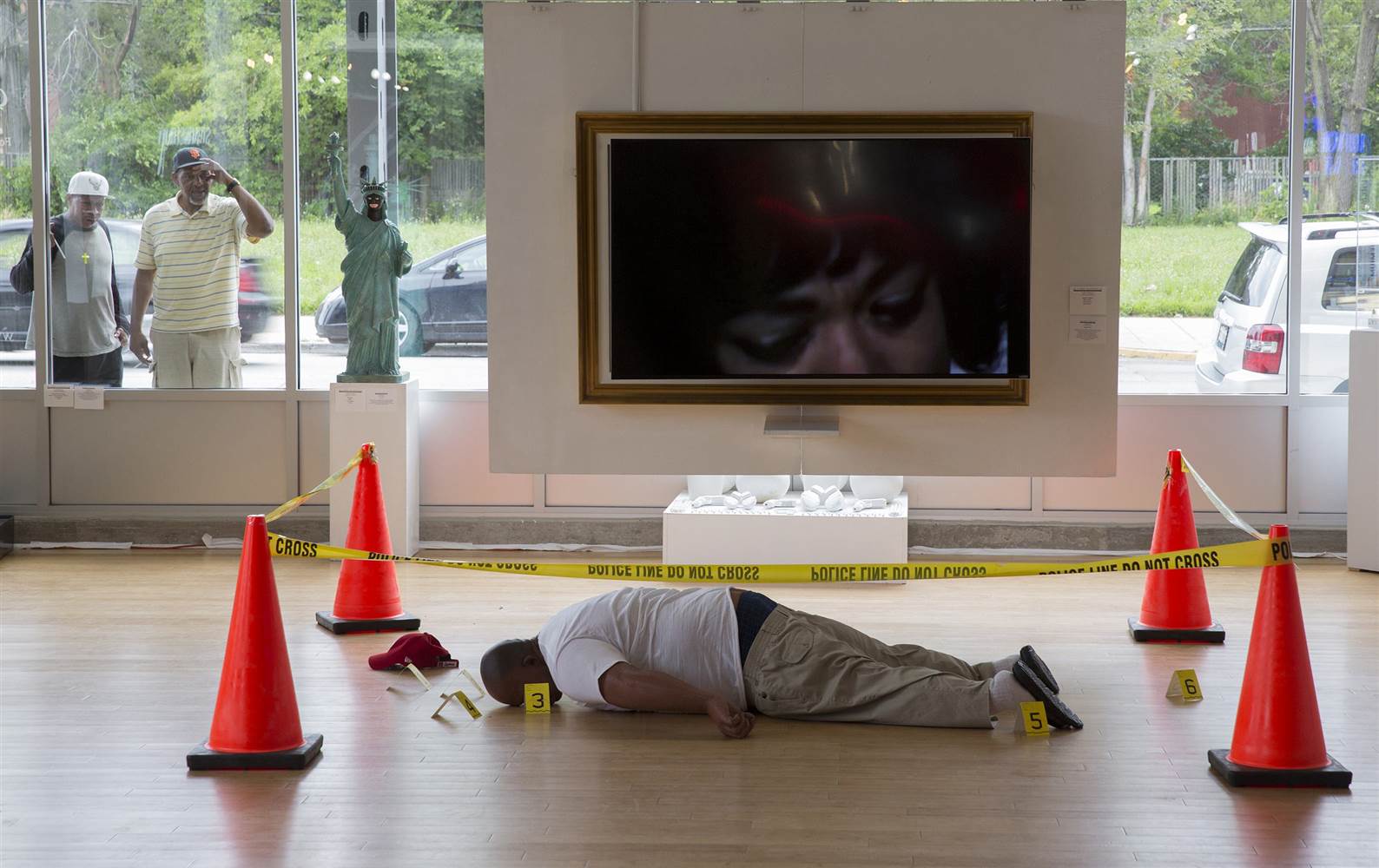
In March of 2015, an artist named Kenneth Goldsmith recited an autopsy report from the St. Louis County Office of the Medical Examiner. Read at Interrupt 3, a conference that “highlights text and/or/as image, art and/or/as language, with a particular investment in digitally mediated language art”, Goldsmith received mixed reception from a shocked audience struggling to contextualize what they just heard.
Kenneth Goldsmith is an American poet. He currently teaches poetry classes at the University of Pennsylvania, an ivy-league school, as well as seminars at the School of Art Institute of Chicago. His courses range from conceptual poetry to interventionism. However Goldsmith is most known for his work in “Uncreative Writing”, a style of poetry that reuses, steals, and otherwise appropriates existing literature and adapting them in a way that differentiates it from the original. It uses the same content, but the way in which the literature is said and acted on can be radically different.
This background information paints Goldsmith’s work as an interesting take on the last moments of a poor person’s life from a cold and objectifying view. It could have been seen as how callously society view’s a dead person after they have passed. The audience could politely listened, hid their uncomfortable feelings from the artist, clapped, and gone home on their merry way. This performance could have been talked about for a few days and quickly drifted into the quirky but forgotten category most art pieces seem to find themselves.
Except Michael Brown wasn’t just a random autopsy report Goldsmith picked. Michael Brown was a St. Louis teen killed by a police officer during a struggle for the officer’s handgun after Brown stole cigarillos from a convenience store on August 9th, 2014. Brown’s death sparked civil unrest and rioting in Ferguson, Missouri which later spread around the country. His death became a rallying call for the Hands Up, Don’t Shoot and Black Lives Matter movements. The life and later shooting of Michael Brown is a sensitive and controversial subject that has brought America back to the racial tensions of the Civil Rights Era of the 20th Century. And Kenneth Goldsmith is White.
Goldsmith’s recitation of the autopsy was somewhat altered in both structure and wording for poetic effect. He replaced some medical terms with more common words in order to illustrate the reading and rearranged certain sections. The thirty minute performance included the entire report with little change. According a person in attendance, “his reading was unemotional and relatively even and his feet moved rhythmically the entire time”. Reception to the piece was along both ends of the spectrum, with some applauding and some shocked into silence. One review critiqued Goldsmith’s performance as a spectacle and something that must be made more meaningful in to justify its existence. A panel judge stated his discomfort by the performance and suggested an early ending to the entire conference. His audience was small in person, but soon his performance spread online and to interested viewers across the world.
Outside the relatively subdued reactions to the piece by the audience in the room, people who heard of his performance through social media were not as kind. Most the responses received were condemnations of the act and even some death threats. While varied in their condemnation, there was one thing that virtually everyone agreed on: this was a white man appropriating and profiting off of a death of a black man.
There is a fine line between using real-life events in conceptual art and taking advantage of the shock factor that accompanies it. Doing so runs the risk of shaping the art in unintended consequences. While Goldsmith did not intend for his work to be construed as a blunt and ignorant perspective of a tragic event involving racial tensions, that is exactly what it became. Even though he had experience doing this type of “art” in the past (his book Seven Deaths and Disasters is a collection of pivotal moments like the JFK assassination and 9/11 as reported from news transcripts), his oversight cannot be used as an excuse for the objectification of Michael Brown and the thousands of other deaths caused by police brutality.
Kenneth Goldsmith’s piece on Michael Brown embodies the unspoken white privilege that perpetuates the upper echelons of society. To think that a young black man’s death that can used for art, without permission from either the young man himself or his family, is unthinkable to people that have experienced oppression in their everyday lives. But to a wealthy artist whose life work is to steal and take other’s property to make a point, it seems okay. The pain and sores from Brown’s death still are fresh in the hearts and minds of millions of Americans, and this poem just adds salt to the wounds.







